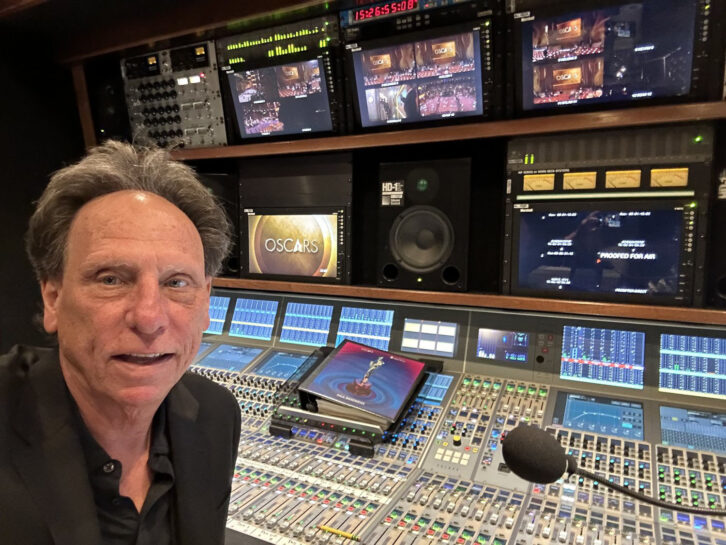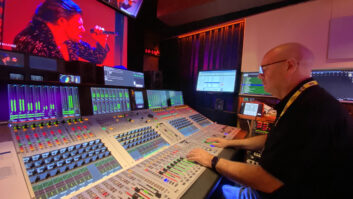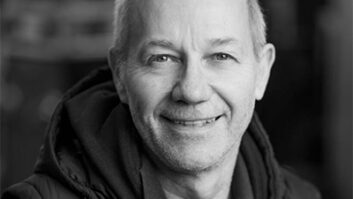It’s customary at major awards shows for the winners to always thank their team during their winner’s speech. But without the broadcast’s hardworking sound team, no one would be able to hear those thanks.
On Sunday night, Paul Sandweiss will be at the Dolby Theatre in Los Angeles as audio director of the 97th Academy Awards.

Sandweiss first worked at the Oscars in 1978 as a maintenance engineer before moving up to become audio mixer in the early 1990s. After a break during the early 2000s he returned to the show at the start of the 2010s and has been involved ever since.
The Oscars has undergone some big changes since Sandweiss’s return, particularly around the number of inputs needed for the show and the growing use of wireless microphones. “We used to have one or two hardwired podiums, but now we have two RF podiums, a pop-up mic and some additional backup to that. Almost everything is RF these days, so you really need somebody to be watching your spectrum to prevent anyone walking in here and turning something on that suddenly hits your frequency. You need to have a team that really watches over and protects you from bad things like that happening.”
Sandweiss will be mixing the 97th Academy Awards on a Calrec Apollo in NEP Denali’s Summit unit. One of the biggest challenges of working on the show is the complicated routing. “All the international feeds and the other stuff comes through here such as the audience mics and dialogue, the podiums and RF mics, all the playback elements from audio and video playback sources. The orchestra and music performances are mixed in the music truck, but their mix feeds come through here to mix in with our broadcast.”
However, using the Calrec Apollo has major advantages, most notably that the show’s chief technical engineer can press a button on the console and Sandweiss will have “last year’s show in front of me”.
“It means the management of all that is fairly straight forward. Everything is preset; I’m going to adjust things like panning, level, microphone gains, EQ, reverbs and such, for example, but I’m already in a good spot, especially as far as the insane in and out patching. I’m starting where we left off last year, which is really nice,” he adds.
“When you’re working on a brand-new show you have to start from scratch and create everything, but for this show it’s the same Calrec console, the same outboard gear, and the same team that we’ve had in place for many years.”

The Oscars has a global audience and planning for the show is meticulous across all aspects of the broadcast. The team spends two days ensuring everything is in place and that every microphone and feed between the broadcast truck, front of house, monitors and the music truck work.
“Saturday is typically when we bring in all the presenters and go through everything. We let them see their eyeline and what camera they’re reading to. We may need to put a number of wireless RF lav mics on many of the talent and find out what outfit they will be wearing so we can match the colour of the mics with their wardrobes,” explains Sandweiss.
“On Saturday night we do a run through, and on Sunday we do a full dress rehearsal with ABC network coordination, and then we are ready to go to air, after a bit of makeup and hair. It’s well organised and well oiled. There are times when things go awry, and you have to be prepared so we have backups to things that we hope we don’t have to use. Most people can’t hear the difference between good and great, but they can hear the difference between good and nothing, so we try and avoid missing any sounds as best we can.”
Sandweiss says that he can only mix “what’s presented to you” but he’s always pleased when a presenter or winner stands out. “It’s so nice when you get a great performance or a really lovely speech,” he adds.
“This show still has that classy old school vibe to it, which I grew up with and I really like. It has elegant walks, beautiful sets and lighting design, beautiful wardrobes, and a great live orchestra. It’s just awesome having big, beautiful water cooler moments. You want people on Monday to say, ‘wow that was great’”.







